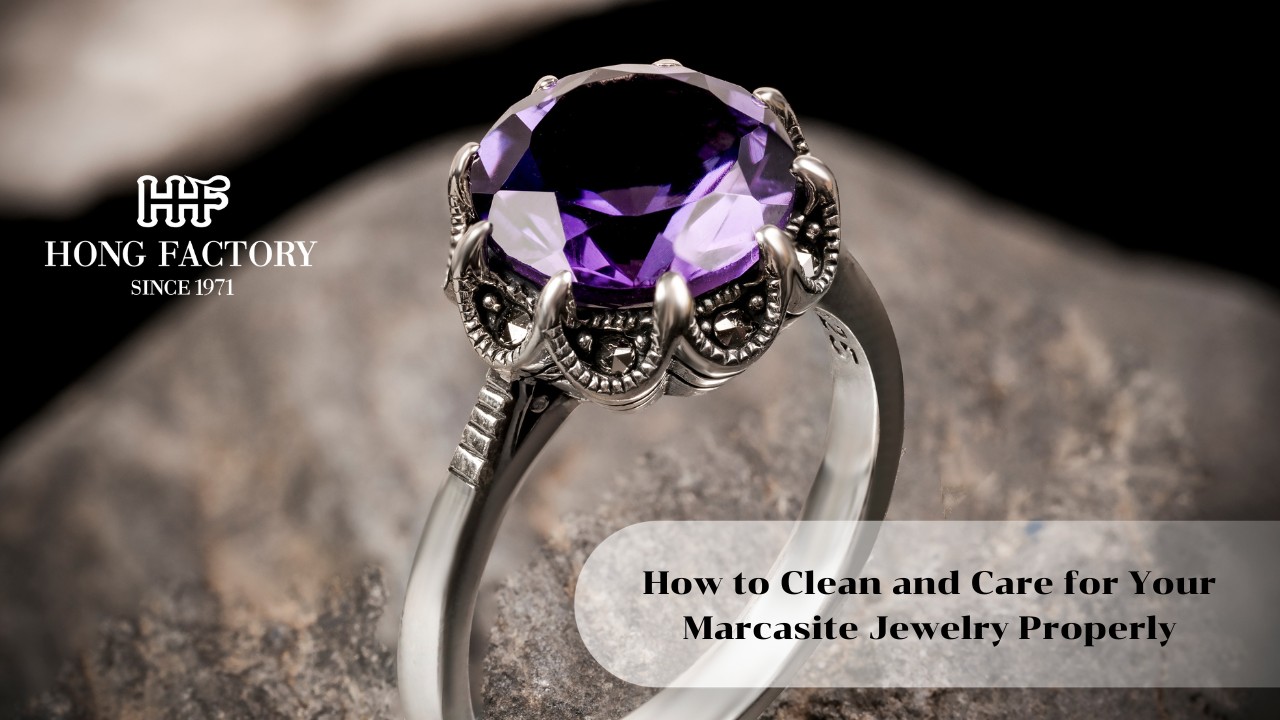
How to Clean and Care for Your Marcasite Jewelry Properly
Taking proper care of your marcasite jewelry is essential for preserving its shine, durability, and vintage elegance. Unlike many modern accessories, marcasite jewelry is crafted with delicate hand-set stones and sterling silver—two materials that require gentle, thoughtful maintenance. When cleaned and stored correctly, marcasite can last for decades and even become a cherished heirloom.
This complete guide provides everything you need to know about caring for marcasite jewelry, from safe cleaning techniques to long-term storage tips. Whether you wear your marcasite pieces daily or only on special occasions, these practices will help them stay beautiful for years to come.
Proper care begins with understanding how marcasite jewelry is made. Most pieces feature tiny pyrite stones set into sterling silver using small prongs. Because the stones are small and often numerous, harsh cleaning methods can loosen the prongs or dull the stones’ shine. With gentle, consistent care, however, your marcasite jewelry will retain its elegance. Marcasite jewelry
1. Use a Soft, Dry Cloth for Daily Cleaning
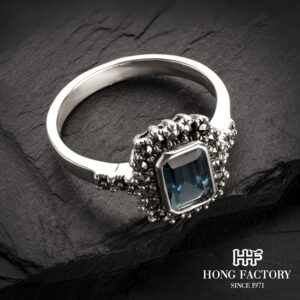
Marcasite jewelry should be cleaned regularly to remove oils, fingerprints, and dust.
Daily care steps:
- Use a clean, soft microfiber or jewelry polishing cloth.
- Gently wipe the surface of the silver and stones.
- Avoid pressing too hard around the stone settings.
This simple practice helps maintain sparkle and prevents tarnish.
2. Avoid Water and Moisture at All Costs
Unlike some other types of jewelry, marcasite should never be exposed to excessive water.
Why moisture is harmful:
- Water can loosen the stone settings.
- Moisture causes silver to tarnish faster.
- Soap and detergents may break down adhesive (on repaired pieces).
Avoid wearing marcasite:
- In the shower
- While washing hands
- At the beach
- While swimming
- During workouts
Keeping marcasite dry is the most important part of proper care.
3. Never Use Liquid Cleaners or Chemicals
Commercial jewelry cleaners and liquid solutions can damage marcasite stones and silver settings.
Do NOT use:
- Silver dip cleaners
- Ultrasonic cleaners
- Abrasive pastes
- Alcohol-based solutions
- Toothpaste or baking soda
These products can dull the stones or loosen them completely.
4. Use a Mild Cleaning Method for Deeper Cleaning
If your marcasite jewelry needs more than a simple wipe, use gentle, controlled cleaning.
Safe cleaning method:
- Lightly dampen a cotton swab with plain water (not soaked).
- Carefully clean around the silver areas.
- Avoid direct contact with the marcasite stones.
- Immediately dry the piece with a soft cloth.
This method works well for removing surface dirt without exposing the stones to too much moisture.
5. Polish the Silver Carefully
Sterling silver naturally tarnishes over time, but polishing must be done gently.
Tips for polishing:
- Use a silver polishing cloth, not liquid polish.
- Rub the metal gently in small circles.
- Avoid the areas near the stone settings.
This preserves both the shine and the integrity of the prongs.
6. Perform Regular Stone Checks
Because marcasite stones are small and individually set, it’s important to inspect them occasionally.
Look for:
- Loose stones
- Worn prongs
- Missing stones
- Slight movement when you touch the setting
If you notice any looseness, stop wearing the jewelry and bring it to a professional jeweler for repair.
7. Store Your Marcasite Jewelry Properly
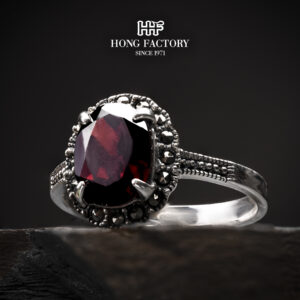
Correct storage prevents damage, tarnish, and oxidation.
Best storage methods:
- Keep each piece in a separate soft pouch.
- Use a jewelry box with a velvet or felt interior.
- Store jewelry away from humidity.
- Add anti-tarnish strips to the storage area.
Avoid storing with:
- Gold jewelry
- Hard gemstones
- Other metals that may scratch the silver
Proper storage extends the life of the stones and silver.
8. Keep Away from Perfume, Lotions, and Chemicals
Marcasite jewelry is sensitive to chemical exposure.
Avoid contact with:
- Perfume
- Hairspray
- Lotions
- Sunscreen
- Makeup
- Hand sanitizers
These substances can break down adhesives, dull the stones, or tarnish the silver.
Best practice:
Always put on marcasite jewelry last, after finishing makeup and hair products.
9. Remove Marcasite Jewelry Before Physical Activities
Physical movements can damage delicate marcasite settings.
Remember to remove jewelry during:
- Exercise
- Cooking
- Gardening
- Cleaning
- Sports
Sweat and impact can loosen stones or dull the metal.
10. Professional Cleaning and Repairs
If your marcasite jewelry becomes damaged or very dirty, take it to an experienced jeweler.
Professionals can:
- Tighten loose stones
- Replace missing stones
- Remove tarnish safely
- Restore shine without risk of damage
Choose a jeweler familiar with vintage or marcasite jewelry specifically.
11. Tips for Long-Term Preservation
If you’re storing marcasite jewelry for long periods:
- Wrap each piece in anti-tarnish paper.
- Place it in an airtight bag or container.
- Store it in a cool, dry place.
- Check on the pieces every few months to ensure no moisture buildup.
These precautions prevent oxidation and stone loosening.
12. Extra Care for Vintage Marcasite Jewelry
Older marcasite pieces require additional caution due to their fragile, aged settings.
Handle vintage marcasite with:
- Light pressure
- Minimal cleaning
- Careful storage
Vintage pieces often have historical value, so gentle preservation is essential.
Conclusion
Proper care is the key to keeping your marcasite jewelry sparkling and structurally sound for years to come. With gentle cleaning, careful storage, and awareness of moisture and chemicals, your marcasite pieces can maintain their beauty and elegance across decades.
Whether you wear marcasite daily or reserve it for special occasions, following these care tips ensures that each piece stays as captivating as the day you received it.
This complete guide is crafted in a clean, educational tone—perfect for PBN websites that require strong informational value and easy readability.
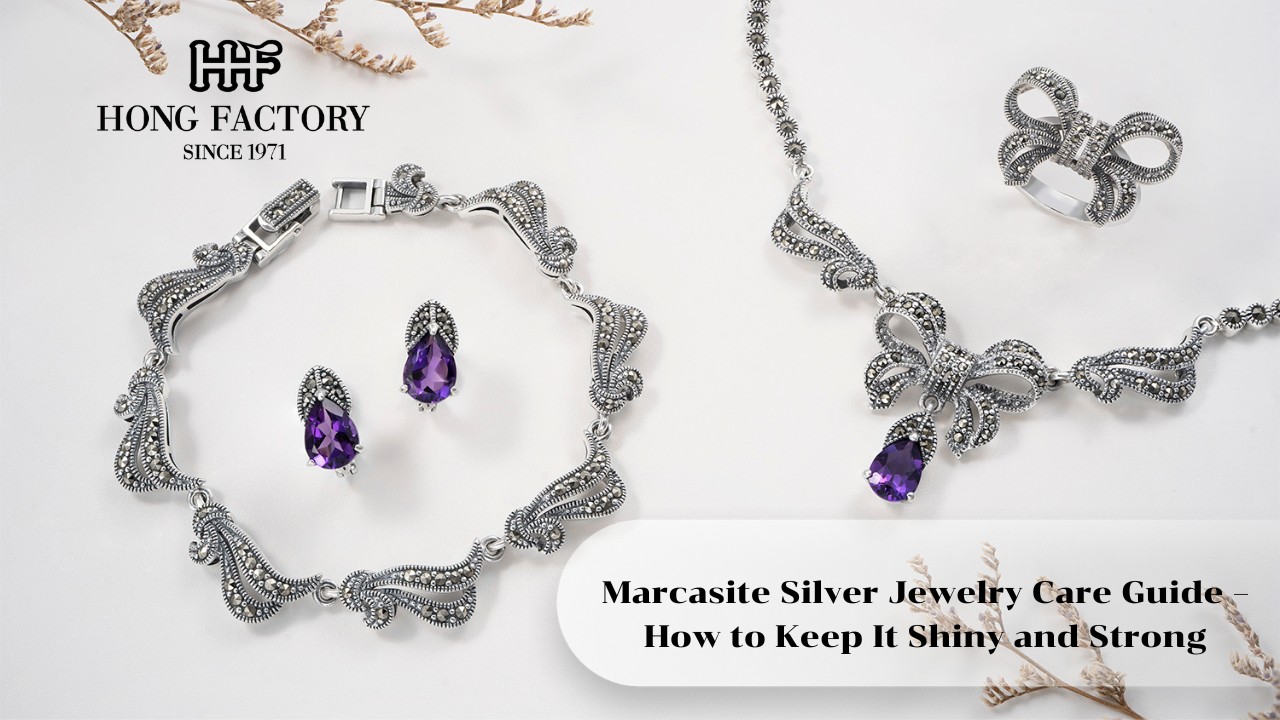
Marcasite Silver Jewelry Care Guide – How to Keep It Shiny and Strong
Marcasite silver jewelry is admired for its delicate sparkle, vintage charm, and timeless elegance. However, because marcasite stones are small, hand-set, and paired with sterling silver, they require special care to keep them looking their best. With the right cleaning habits and maintenance routines, marcasite silver jewelry can remain beautiful and durable for many years. This easy-to-follow guide explains exactly how to protect, clean, store, and care for your marcasite pieces—perfect for beginners, collectors, and everyday wearers.
How to Care for Marcasite Silver Jewelry (keyword: marcasite silver jewelry)
Marcasite silver jewelry consists of tiny faceted marcasite stones set into sterling silver. Because the stones are often secured using delicate prongs, and because silver naturally tarnishes over time, proper care is essential. Understanding what damages marcasite—and what preserves it—will help you extend the life and beauty of your jewelry collection. Marcasite jewelry
Why Marcasite Silver Jewelry Needs Special Care
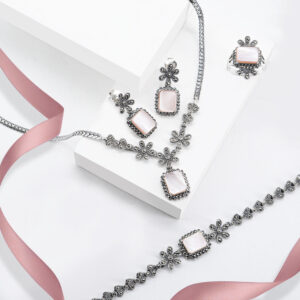
Unlike many gemstones that are mounted in larger, heavier settings, marcasite stones are small and more fragile. They can loosen or dull over time if exposed to chemicals, moisture, or improper cleaning techniques. Sterling silver, while durable, can also tarnish if not maintained.
Proper care helps:
- Maintain the shine of the stones
- Preserve the silver from tarnishing
- Prevent stones from loosening
- Protect the delicate design details
With simple habits, marcasite jewelry can last for decades.
1. Keep Marcasite Jewelry Away from Water
Water is one of the biggest threats to marcasite jewelry. When moisture seeps into the tiny settings that hold the stones, it can weaken the prongs or cause stones to fall out.
Avoid wearing your jewelry while:
- Showering
- Swimming
- Washing dishes
- Exercising or sweating heavily
Moisture can also accelerate tarnishing of silver. Always remove marcasite pieces before any activity that involves water.
2. Avoid Perfumes, Lotions, and Chemicals
Perfume, hairspray, lotion, sunscreen, and household cleaners can damage both marcasite stones and silver settings.
Safe routine:
- Apply cosmetics first
- Let them fully dry
- Put on your marcasite jewelry last
This protects the stones from residue and keeps the silver looking bright.
3. Clean Gently—Never Submerge in Liquid Cleaners
Cleaning marcasite jewelry requires a gentle approach. Harsh chemicals or soaking can loosen stones and damage silver.
Safe cleaning method:
- Use a soft, dry cloth to gently wipe the jewelry
- Avoid toothpaste, baking soda, or polishing creams
- Do not use ultrasonic cleaners—they can dislodge stones
If deeper cleaning is needed, use a slightly damp cloth on the silver only. Avoid touching the stones with moisture.
4. Polish the Silver Carefully
Sterling silver naturally tarnishes over time. To keep your jewelry shiny, use a silver polishing cloth.
Tips for effective polishing:
- Polish the silver areas only
- Don’t rub the marcasite stones directly
- Use slow, gentle motions
This preserves the sparkle of the stones while refreshing the silver’s shine.
5. Store Marcasite Jewelry Properly
Storage plays a big role in keeping marcasite silver jewelry safe.
Best storage practices:
- Keep each piece in its own pouch or box
- Use anti-tarnish bags when possible
- Store in a cool, dry place—avoid humidity
- Keep away from direct sunlight
Individual storage prevents scratching and keeps the stones secure.
6. Check the Stone Settings Regularly
Because marcasite stones are small and individually set, the tiny prongs can loosen over time.
Check for:
- Loose stones
- Gaps in the setting
- Visible movement when touched
If you notice anything unusual, take the jewelry to a professional jeweler for tightening. Preventive care protects the piece from losing stones.
7. Wear with Care
Marcasite jewelry is durable but delicate. Treating it gently ensures longevity.
Avoid wearing during:
- Sports or physical activity
- Gardening or outdoor work
- Cooking or cleaning
Even slight impacts can loosen stones or damage detailed patterns.
8. Use Professional Cleaning When Needed
If your marcasite silver jewelry becomes heavily tarnished or extremely dirty, a professional jeweler can safely clean it without risking damage.
Professional services can:
- Tighten loose stones
- Remove deep tarnish safely
- Restore shine using proper tools
- Inspect the structural integrity
This helps preserve valuable or sentimental pieces.
9. Understand What Causes Damage
Knowing what harms marcasite silver jewelry helps prevent accidental damage.
Common causes of damage:
- Moisture exposure
- Chemicals and perfumes
- Rough handling
- Improper storage
- Aggressive cleaning techniques
When you avoid these, your jewelry stays strong and beautiful.
10. Tips for Long-Term Preservation
If you plan to collect or store marcasite jewelry for years, follow long-term conservation tips used by collectors:
- Use silica gel packs to control humidity
- Wrap pieces in anti-tarnish paper
- Store flat to avoid tension on stone settings
- Rotate wearing pieces to avoid constant pressure on one item
These small habits significantly extend the life of your jewelry.
Why Good Care Matters
Well-maintained marcasite silver jewelry retains:
- Its original shine
- Structural strength
- Sentimental and aesthetic value
Whether worn daily or kept as part of a vintage collection, proper care ensures your jewelry remains a cherished piece for many years.
Conclusion
Caring for marcasite silver jewelry is simple once you understand the do’s and don’ts. Avoiding moisture, chemicals, and rough handling while practicing gentle cleaning and proper storage will preserve the shine, beauty, and craftsmanship of your pieces.
With the tips in this guide, you can confidently protect your jewelry and enjoy its elegance for decades. This article is written in a clean, informative blog style—perfect for PBN websites that aim to provide value-rich, natural content to readers.

The Metaphysical Powers of the Peridot Gemstone
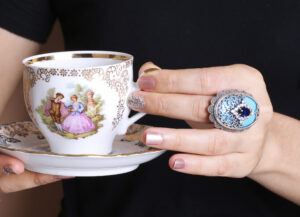
The peridot gemstone has long been admired not only for its vivid green beauty but also for its deep metaphysical meaning. Known as the “Stone of Light,” peridot radiates uplifting, calming, and transformative energy that many spiritual practitioners cherish. Its warm glow is believed to cleanse the mind, rejuvenate the spirit, and attract abundance. In this guide, we explore the powerful metaphysical properties of the peridot gemstone and how it can enhance emotional, spiritual, and energetic well-being. marcasite
Understanding the Energy of the Peridot Gemstone
The Peridot Gemstone is associated with both the heart and solar plexus chakras—making it a stone of emotional healing, confidence, and personal power. Many believe that peridot carries the energy of sunlight, bringing warmth and renewal into the life of its wearer.
Its gentle yet powerful vibrations help release negativity while promoting clarity, compassion, and inner strength.
- Emotional Healing and Cleansing
One of peridot’s most praised metaphysical powers is its ability to cleanse emotional blockages. It encourages:
- letting go of past hurts
- releasing resentment
- healing emotional wounds
- freeing negative thought patterns
Why it works:
Peridot’s calming energy naturally reduces stress and emotional tension, helping the mind return to a state of peace and clarity.
- Attracting Abundance and Prosperity
Peridot has long been regarded as a magnet for prosperity. Ancient civilizations believed the stone brought good fortune, success, and opportunities.
Benefits include:
- attracting wealth and financial stability
- inspiring motivation and productivity
- removing fears related to money
- boosting confidence in personal goals
Its connection to growth and renewal makes it an ideal stone for manifesting abundance.
- Strengthening Self-Confidence and Willpower
Peridot activates the solar plexus chakra—the core of personal power. This makes it a powerful stone for:
- overcoming self-doubt
- boosting courage
- strengthening decision-making
- building healthy boundaries
Peridot helps align your intentions with your actions, making it easier to move forward with confidence.

- Enhancing Compassion and Emotional Balance
Because peridot is strongly connected to the heart chakra, it nurtures:
- empathy and forgiveness
- emotional balance
- openness to love
- deeper connection with others
How it helps:
Its gentle vibrations soften the heart, making it easier to release anger and embrace calm, compassionate thinking.
- Protection from Negative Energy
Peridot has historically been worn as a protective amulet. It is believed to shield the wearer from:
- emotional negativity
- jealousy and envy
- toxic influences
- energetic attacks
Many spiritual healers consider peridot a cleansing stone that purifies one’s energy field.
- Awakening Intuition and Inner Wisdom
Peridot is also associated with heightened intuition. It helps clear mental fog and allows deeper spiritual awareness to emerge.
Peridot supports:
- meditation and mindfulness
- connecting with higher consciousness
- strengthening intuitive decision-making
- clarity in difficult situations
Its radiant vibration guides the mind toward truth and self-awareness.
- Promoting Physical Wellness Through Energy Balance
Though not a medical treatment, peridot is believed in spiritual practice to support overall wellness by balancing emotional energy.
It is said to:
- reduce stress-related fatigue
- support healthy metabolism
- encourage restful sleep
- promote general vitality
This is based on the belief that emotional harmony leads to physical harmony.
- Using Peridot in Spiritual Practice
There are many simple ways to incorporate peridot into your daily life:
Wear it as jewelry
Peridot rings, necklaces, or bracelets provide continuous energetic support throughout the day.
Meditate with the stone
Hold a peridot gemstone to your heart or solar plexus to release emotional tension.
Place it in your living space
Peridot in your bedroom or workspace brings soothing, balancing energy.
Use in affirmations
Pair peridot with affirmations like:
- “I release what no longer serves me.”
- “I welcome abundance and renewal.”
- “My heart is open, balanced, and strong.”
- Caring for Peridot’s Energy
To maintain its spiritual vibrancy:
- Cleanse it with moonlight or gentle water.
- Charge it using selenite or clear quartz.
- Avoid exposing it to harsh sunlight.
Energetic cleansing helps reset the stone’s healing properties.
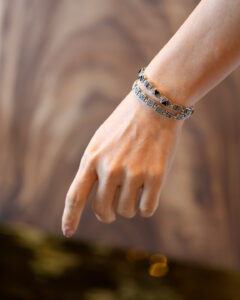
The Peridot Gemstone is far more than a beautiful green crystal—it is a powerful spiritual tool for emotional healing, protection, abundance, and inner clarity. Its luminous energy lifts the spirit, supports personal growth, and helps create a sense of peace and balance.
Whether worn daily or used in spiritual practice, peridot serves as a gentle reminder that renewal and light are always within reach. Its metaphysical powers continue to inspire those who seek harmony, healing, and positive transformation in their lives.

Why Earring Cubic Zirconia Makes a Thoughtful Gift
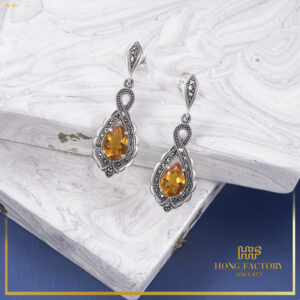
Jewelry has long been one of the most meaningful and cherished forms of gift-giving. It symbolizes affection, gratitude, and appreciation while reflecting the personality of the giver and the recipient. Among the many jewelry options available today, Earring Cubic Zirconia stands out as a perfect blend of elegance, sentiment, and practicality. Whether it’s for a birthday, anniversary, graduation, or just a token of love, cubic zirconia earrings make an ideal choice for anyone who values timeless beauty without extravagance. This article explores why CZ earrings are more than just accessories—they are heartfelt expressions of thoughtfulness. marcasite jewelry
Earring Cubic Zirconia – The Gift That Shines with Meaning
The Earring Cubic Zirconia captures both visual brilliance and emotional significance. Its diamond-like sparkle, affordability, and versatility make it an exceptional choice for meaningful gifting. Here’s why giving CZ earrings is a gesture that truly resonates.
- Symbol of Appreciation and Love
Cubic zirconia earrings carry deep emotional meaning. Their enduring brilliance symbolizes everlasting love, friendship, and connection. Whether you’re celebrating a romantic relationship, expressing gratitude to a friend, or honoring a family bond, gifting Earring Cubic Zirconia reflects sincerity and care. The clarity and radiance of CZ stones mirror pure affection, making them ideal for moments that matter.
- Timeless Elegance for Every Personality
Cubic zirconia earrings have a universal appeal. Their versatile designs—ranging from minimalist studs to elaborate drops—suit every style and occasion. This adaptability ensures that the gift recipient will always find an opportunity to wear them. Whether the person loves modern fashion or classic sophistication, Earring Cubic Zirconia fits seamlessly into any wardrobe, offering endless styling possibilities.
- Affordability Without Compromise
One of the most thoughtful aspects of gifting cubic zirconia jewelry is its balance between luxury and affordability. High-quality CZ earrings capture the dazzling look of diamonds but at a fraction of the cost. This allows givers to express love and generosity without financial strain. The affordability of CZ jewelry also makes it possible to choose complementary pieces—like matching necklaces or rings—for a complete and elegant set.
- A Gift Suitable for Any Occasion
Earring Cubic Zirconia is a versatile gift that fits almost any celebration. It’s a timeless choice for birthdays, weddings, anniversaries, graduations, or holidays like Valentine’s Day and Christmas. CZ earrings can even serve as thoughtful thank-you or appreciation gifts for bridesmaids, mothers, or mentors. Their understated beauty ensures they never go out of style, regardless of the event.
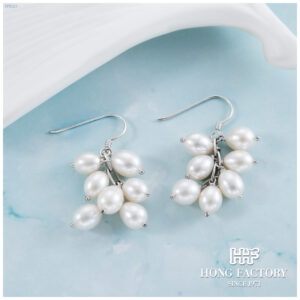
- Elegance That Transcends Generations
A well-chosen pair of CZ earrings holds sentimental value that can be passed down through generations. Much like fine gemstones, high-quality cubic zirconia pieces retain their sparkle and charm for years. This longevity makes them more than a fashion accessory—they become a keepsake, a memory, and a connection between moments in time. When you gift Earring Cubic Zirconia, you’re giving something that lasts far beyond the occasion.
- Sustainable and Ethical Choice
Modern jewelry enthusiasts are increasingly conscious of sustainability and ethical sourcing. Cubic zirconia is lab-created, meaning it’s a conflict-free and environmentally responsible alternative to mined diamonds. By choosing Earring Cubic Zirconia, you’re also gifting with awareness—showing that beauty and responsibility can coexist harmoniously. This adds an extra layer of meaning to your present, aligning with values of compassion and respect for the planet.
- Personalization and Custom Designs
Another reason why CZ earrings make thoughtful gifts is the opportunity for personalization. From customized engravings to choosing metal finishes—such as sterling silver, rose gold, or white gold—you can tailor the jewelry to reflect the recipient’s taste. Adding colored stones or unique designs can make the Earring Cubic Zirconia gift even more special, turning it into a truly one-of-a-kind keepsake.
- Suitable for All Ages
Whether you’re gifting a young graduate, a loving partner, or a beloved parent, cubic zirconia earrings transcend age boundaries. Simple CZ studs are ideal for daily wear, while elegant drop designs complement mature, refined styles. Their universal appeal makes them the perfect go-to gift when you want something beautiful, appropriate, and meaningful for anyone.
- Easy Maintenance and Lasting Shine
Unlike many fine gemstones that require delicate handling, CZ earrings are low-maintenance yet retain their brilliance for years. Recipients can enjoy their jewelry without worrying about constant upkeep. Cleaning them with mild soap and water is usually enough to restore their shine. This practicality enhances the thoughtful nature of the gift—beauty that’s easy to preserve.
- The Emotional Connection Behind Every Sparkle
Ultimately, what makes Earring Cubic Zirconia such a thoughtful gift is the sentiment it carries. Every sparkle represents care, attention, and the joy of giving. When someone wears a piece gifted from the heart, it becomes a symbol of connection—reminding them of the giver every time it catches the light. The combination of beauty, meaning, and practicality makes CZ earrings an unforgettable token of affection.

The Earring Cubic Zirconia is more than a piece of jewelry—it’s a reflection of thoughtfulness, emotion, and lasting beauty. Its radiant sparkle, ethical origins, and timeless appeal make it a meaningful gift for any occasion. Whether celebrating love, friendship, or achievement, CZ earrings convey elegance and sincerity in every facet. By choosing cubic zirconia jewelry, you’re giving not just a beautiful accessory but a lasting memory—a symbol of appreciation that continues to shine long after the moment has passed.
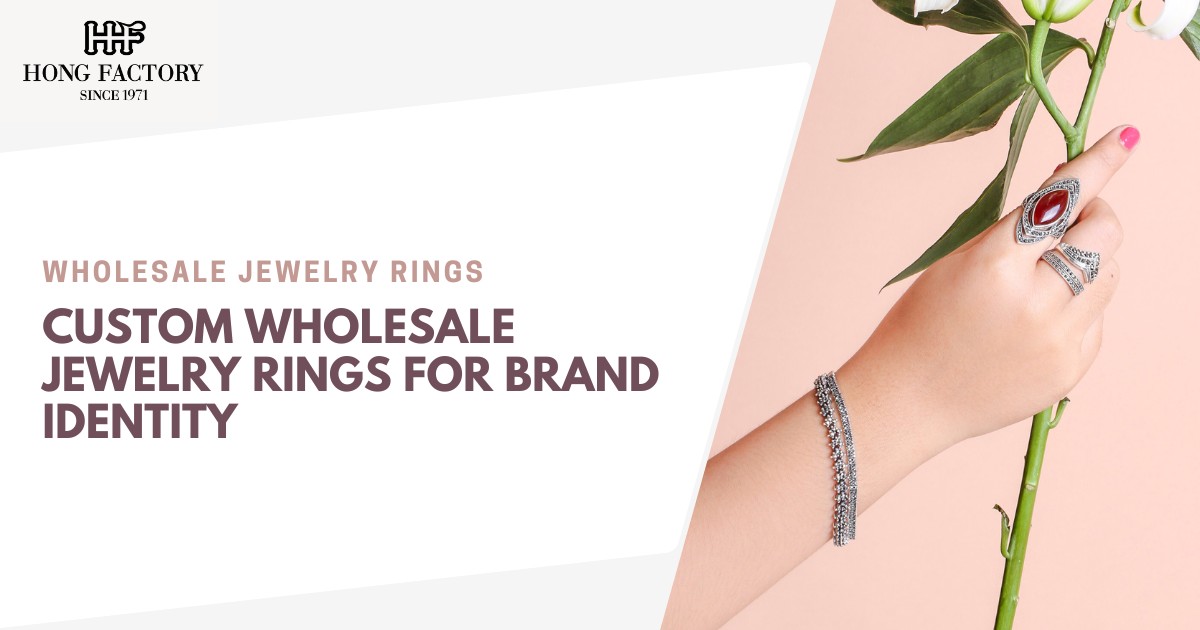
Custom Wholesale Jewelry Rings for Brand Identity
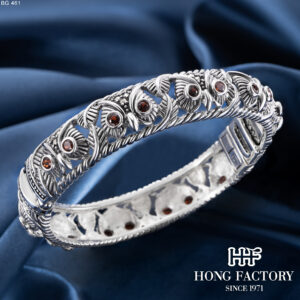
In the jewelry industry, customization is more than a design choice—it’s a branding strategy. For retailers and jewelry brands, offering custom wholesale jewelry rings allows them to express individuality, build brand recognition, and connect emotionally with customers. Wholesalers who understand the value of brand identity can strengthen partnerships and create long-term business opportunities. This article explores how custom jewelry rings can elevate a brand’s presence, increase sales, and establish a loyal customer base. marcasite jewelry
The Power of Customization in Jewelry Branding
Customization enables brands to tell their story through design. Every logo, pattern, or gemstone combination can reflect a brand’s values, heritage, and aesthetic. In today’s competitive market, customers gravitate toward personalized and meaningful jewelry, which makes custom wholesale jewelry rings a perfect solution for retailers who want to stand out.
By working with manufacturers that offer design flexibility, brands can create unique collections that resonate with their audience. Whether through subtle engravings, signature gemstone arrangements, or unique band textures, custom jewelry allows brands to make a lasting impression that mass-produced pieces cannot replicate.
Why Retailers Choose Custom Wholesale Jewelry Rings
Retailers seek differentiation, and customized jewelry helps them achieve it. Wholesale manufacturers who specialize in bespoke services offer retailers an edge by providing tailor-made designs that align with seasonal trends or exclusive brand identities.
The key benefits include:
- Brand Recognition: Custom pieces showcase signature design elements that make a collection easily identifiable.
- Customer Loyalty: Personalized rings foster emotional connections, encouraging repeat purchases.
- Market Adaptability: Brands can quickly adjust styles to fit trends without rebranding entire collections.
- Higher Profit Margins: Exclusive pieces often justify premium pricing, enhancing profitability.
These advantages make custom wholesale jewelry rings a valuable investment for retailers aiming to strengthen their market presence.
Designing with Purpose and Identity
Creating a custom ring begins with understanding the brand’s DNA. Each design should embody the brand’s tone—be it elegant, bohemian, vintage, or minimalist. Collaborating closely with manufacturers ensures that every curve, engraving, and gemstone placement aligns with the brand’s visual identity.
Some creative customization options include:
- Signature Motifs: Patterns or icons that represent the brand’s story.
- Exclusive Gemstone Palettes: Using colors that match the brand logo or identity.
- Engraved Logos or Initials: Subtle yet effective branding for rings.
- Limited Edition Series: Short-run designs that build exclusivity and urgency.
By translating brand essence into tangible jewelry design, retailers can offer collections that feel personal and exclusive.

Wholesale Jewelry Rings and Manufacturer Collaboration
The success of Wholesale Jewelry Rings depends on choosing the right manufacturing partner. Leading Thai manufacturers, such as Hong Factory, combine decades of experience with modern production technologies, offering OEM (Original Equipment Manufacturer) and ODM (Original Design Manufacturer) services for jewelry brands worldwide.
Collaborating with trusted suppliers ensures that custom designs are executed with precision and efficiency. Manufacturers with in-house design teams can help translate brand sketches into 3D models, prototypes, and final products while maintaining consistent quality and ethical production standards.
Balancing Creativity and Scalability
One challenge with customization is maintaining consistency while scaling production. High-quality wholesalers use advanced manufacturing processes such as 3D printing, laser engraving, and precision casting to produce intricate designs efficiently.
This balance allows brands to maintain creative freedom without compromising delivery schedules or quality. Wholesalers who master both artistry and logistics become reliable partners for global retailers seeking consistent output at scale.
Sustainability and Brand Reputation
In the modern market, ethical production is closely tied to brand identity. Customers increasingly support brands that emphasize sustainability and fair trade practices. Working with eco-conscious manufacturers ensures that each custom ring not only represents style but also responsibility.
Many Thai jewelry factories prioritize recycled silver, conflict-free gemstones, and fair labor policies. By promoting these ethical standards, wholesalers and retailers alike can strengthen their reputation and attract conscientious consumers.
The Role of Storytelling in Custom Jewelry
Storytelling gives custom jewelry its soul. Each ring can represent a journey—a celebration, milestone, or symbol of love. When brands share the story behind their designs, they forge deeper emotional connections with their customers.
Incorporate storytelling into marketing by highlighting elements such as:
- The inspiration behind the design.
- The artisans and techniques used.
- The symbolism of gemstones and materials.
Sharing the creative process in catalogs, websites, and social media builds authenticity and helps customers appreciate the craftsmanship behind each piece.
Marketing Custom Collections for Retailers
To maximize impact, retailers should market custom wholesale jewelry rings as signature products rather than standard inventory. Use professional photography and lifestyle imagery to demonstrate how the rings complement the brand’s fashion identity.
Key marketing strategies include:
- Featuring custom rings in lookbooks and seasonal campaigns.
- Offering exclusive pre-orders for loyal customers.
- Creating digital catalogs showcasing unique features.
- Collaborating with influencers who reflect the brand’s aesthetic.
This approach elevates the perceived value of the jewelry and positions the brand as a creative authority in the market.
How Custom Wholesale Jewelry Rings Drive Business Growth
Custom collections do more than define brand identity—they also enhance long-term growth. By owning unique designs, retailers reduce dependency on competitors and develop a recognizable brand presence. Repeat customers are more likely to purchase matching pieces, such as earrings or bracelets, further expanding sales potential.
Additionally, custom rings are ideal for B2B clients, including boutiques, wedding planners, and corporate gift programs. The ability to personalize jewelry for different demographics ensures steady demand across markets.

Defining Brands Through Custom Creations
Custom wholesale jewelry rings transform branding from concept to craft. They allow retailers to showcase individuality, connect emotionally with customers, and establish a lasting impression in the marketplace.
By partnering with experienced manufacturers, prioritizing ethical production, and weaving stories into every design, brands can turn custom jewelry into a signature element of their identity. In a world filled with mass production, customization remains the ultimate expression of creativity—and the most powerful way to make your brand unforgettable.

Online vs Offline Wholesale Accessory Markets

The global accessory industry has evolved dramatically over the past decade, driven by digital transformation, shifts in consumer purchasing behavior, and the expansion of international trade. As a result, buyers today can choose between two major sourcing channels: online wholesale platforms and offline physical wholesale markets. marcasite jewelry
Each option has its advantages and limitations, and understanding these differences is essential for retailers, boutique owners, and entrepreneurs who aim to succeed in the competitive wholesale landscape.
This article explores the pros and cons of online and offline wholesale accessory markets, helping you determine which sourcing method best suits your business needs.
Comparing the Wholesale Accessory Market in Online and Offline Channels
The Wholesale Accessory Market is now accessible through both digital and physical channels. While traditional offline markets continue to thrive, online platforms have rapidly gained popularity due to convenience and global reach.
Below is a detailed comparison to help you evaluate both sourcing options.
- Convenience and Accessibility
Online Wholesale Markets
Online markets offer unparalleled convenience:
- 24/7 access from anywhere in the world
- No need for physical travel
- Immediate product viewing through catalogs, photos, and videos
This makes online sourcing especially attractive to small businesses and startups.
Offline Wholesale Markets
Offline markets require in-person visits, which can be time-consuming but offer hands-on benefits such as:
- Touching and inspecting product samples
- Real-time negotiation with sellers
- Access to local wholesalers not available online
For businesses seeking personal interaction and physical inspection, offline markets remain a strong choice.
- Product Inspection and Quality Control
Online Wholesale Markets
Online sourcing relies heavily on digital content. Quality control challenges include:
- Difficulty verifying material quality from photos
- Possible color variations
- Potential for misleading images
Buyers often need to request samples before placing large orders.
Offline Wholesale Markets
Offline sourcing allows buyers to inspect:
- Texture and durability
- Craftsmanship details
- True size, color, and finishing
This hands-on approach results in more accurate product evaluation.
- Range of Products and Diversity of Suppliers
Online Wholesale Markets
Online platforms usually offer a significantly larger selection due to global integration:
- Thousands of suppliers worldwide
- Fast-trending product categories
- New arrivals added daily
This makes online markets ideal for discovering unique or trending accessories.
Offline Wholesale Markets
Offline markets offer curated selections from local or regional suppliers. The advantage is:
- Access to specialty items not listed online
- Stronger cultural influence in styles
However, the variety may be more limited compared to online options.
- Pricing and Negotiation Opportunities
Online Wholesale Markets
Pricing is often fixed or semi-negotiable. Online platforms provide:
- Transparent pricing
- Price comparison tools
- Discounts on bulk orders
Though convenient, negotiation tends to be limited.
Offline Wholesale Markets
Offline markets often offer better negotiation opportunities:
- Discounts based on relationship building
- On-the-spot price adjustments
- Lower prices for cash payments or bulk buys
Experienced negotiators often secure better deals offline.
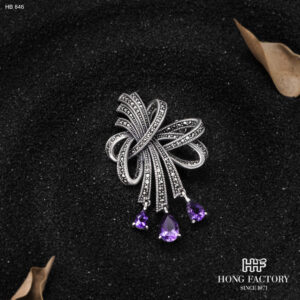
- Minimum Order Quantities (MOQs)
Online Wholesale Markets
MOQs vary, but many online platforms now offer:
- Low minimums for small buyers
- Drop shipping options
- Starter packs for new retailers
This flexibility supports small businesses and new entrepreneurs.
Offline Wholesale Markets
Offline markets sometimes require higher MOQs, depending on supplier:
- Local wholesalers typically set fixed bulk quantities
- Best for mid-size or established retailers
While prices may be lower offline, MOQs could be less flexible.
- Shipping, Logistics, and Delivery
Online Wholesale Markets
Online sourcing offers streamlined logistics:
- Integrated shipping options
- Tracking and insurance services
- Worldwide delivery support
However, shipping fees and customs taxes may add costs.
Offline Wholesale Markets
Offline purchases generally require buyers to handle their own logistics:
- Carrying items back personally
- Hiring local delivery services
- Arranging bulk freight for large orders
This can be more complex but may reduce shipping costs.
- Reliability and Supplier Trust
Online Wholesale Markets
Online trust depends on digital reviews, ratings, and platform policies. Challenges include:
- Risk of unreliable suppliers
- Inconsistent product quality
- Difficulty resolving disputes
Reliable platforms solve this by offering buyer protection features.
Offline Wholesale Markets
Offline sourcing offers:
- Direct communication with sellers
- Long-term relationship building
- More transparency in negotiations
Trust is built faster when you meet suppliers in person.
- Trend Adaptation and Product Updates
Online Wholesale Markets
Online suppliers update collections frequently, making it easier to:
- Catch new trends early
- Test trending products quickly
- Source viral accessories on demand
Social media-driven trends favor online sourcing.
Offline Wholesale Markets
Offline markets may update slower but often offer:
- Unique handmade items
- Region-specific fashion trends
- Artisan-made or limited-edition designs
These unique products can help niche retailers stand out.
Wholesale Accessory Market: Which Option Is Better?
The Wholesale Accessory Market is strong in both online and offline formats. The best sourcing method depends on your business goals:
Choose Online Wholesale Markets if you want:
- Convenience
- Global variety
- Fast-trending items
- Low MOQs
- Streamlined shipping options
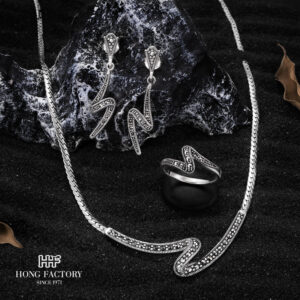
Choose Offline Wholesale Markets if you want:
- Hands-on product inspection
- Strong supplier relationships
- Better negotiation opportunities
- Access to local specialty products
Many successful retailers use a combination of both to balance quality, pricing, and trend responsiveness.
Both online and offline wholesale accessory markets offer unique benefits and valuable opportunities. Online platforms provide convenience and global reach, while offline markets offer hands-on product evaluation and stronger supplier relationships.
For retailers seeking long-term success, blending both sourcing methods often delivers the best results—ensuring a wide range of quality products, competitive pricing, and access to the latest fashion trends.
By understanding the strengths of each channel, businesses can build a smart, efficient, and profitable wholesale sourcing strategy.
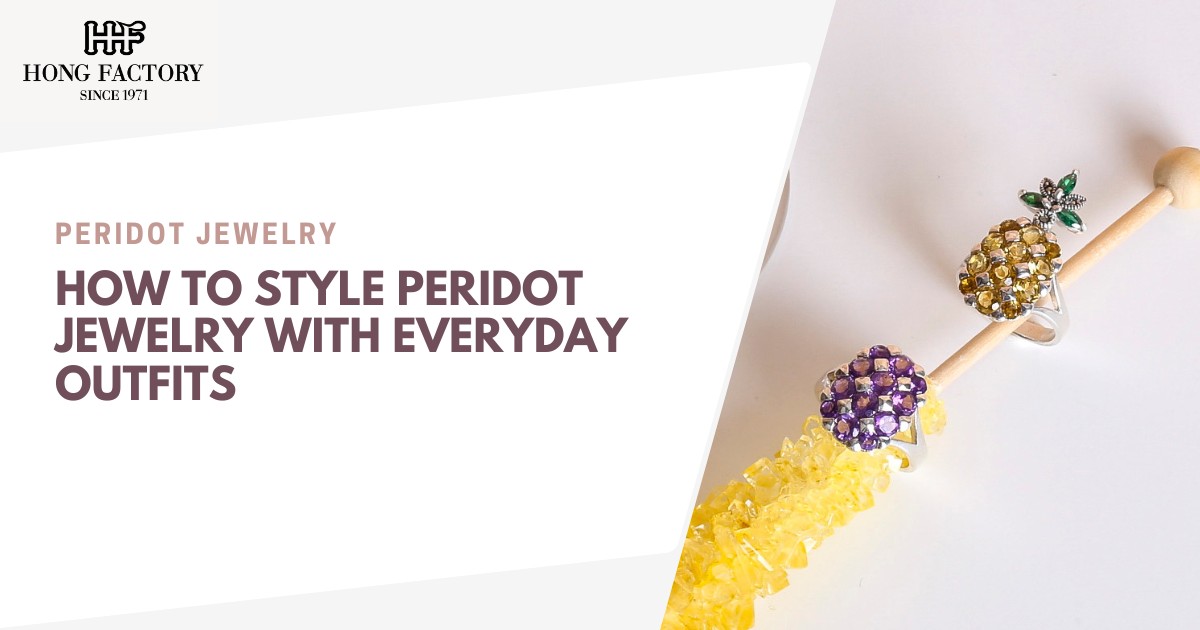
How to Style Peridot Jewelry with Everyday Outfits

Peridot jewelry is admired for its vibrant green color and uplifting energy. While many consider it a gemstone for special occasions, it’s actually perfect for everyday wear. With its natural brightness and versatility, peridot adds a refreshing touch to any outfit — from casual daytime looks to elegant evening ensembles. In this guide, we’ll show you how to style Peridot Jewelry with everyday outfits so you can make the most of its timeless charm. marcasite jewelry
The Beauty of Peridot Jewelry
The Peridot Jewelry collection shines with a natural radiance that symbolizes renewal, harmony, and happiness. Its lively green hue complements all skin tones and effortlessly enhances any wardrobe. Whether set in sterling silver, gold, or rose gold, peridot pieces add sophistication without feeling too formal.
Peridot’s versatility lies in its ability to balance luxury with simplicity. It can be paired with casual fashion for a subtle pop of color or with formal wear for an elegant statement. No matter your style, this gemstone brings a sense of positivity and brightness to your look.
Why Peridot Jewelry Works for Everyday Fashion
There’s a reason Peridot Jewelry has become a favorite among modern jewelry lovers — it’s stylish, meaningful, and practical. Here’s why it’s perfect for daily wear:
- Neutral Yet Eye-Catching: The green tones of peridot complement most colors, from neutrals like beige and white to bolder hues like navy and burgundy.
- Lightweight and Comfortable: Peridot jewelry is designed to be worn daily without feeling heavy or intrusive.
- Elegant but Affordable: It offers a luxurious look at a reasonable price, making it accessible to anyone who wants to elevate their style.
- Positive Symbolism: Associated with happiness and harmony, wearing peridot can lift your mood throughout the day.
Peridot Jewelry Styling Tips for Everyday Outfits
Now let’s explore how you can wear peridot jewelry effortlessly with different styles and occasions.
- Office Chic: Subtle and Sophisticated
For professional environments, choose peridot pieces that are minimal yet refined. A pair of small peridot stud earrings or a thin silver necklace adds a polished touch without overwhelming your outfit.
Style Tip: Pair a peridot pendant with a crisp white blouse or pastel-toned blazer for a fresh and elegant office look.
- Casual Comfort: Effortless Everyday Wear
When you’re going for a relaxed vibe, simple peridot rings or bracelets add the perfect amount of color. Their light green glow complements denim, linen, and cotton fabrics beautifully.
Style Tip: Try layering a few delicate peridot bracelets with your watch or stacking peridot rings for a laid-back yet stylish appearance.
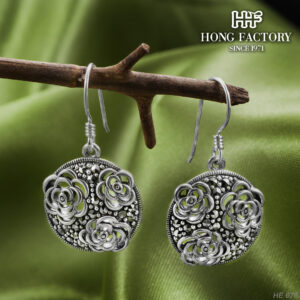
- Romantic Evenings: Subtle Glamour
Peridot jewelry can easily transition from day to night. Choose pieces with a bit more sparkle — such as peridot drop earrings or halo rings — for dinner dates or evening outings.
Style Tip: Pair your peridot jewelry with darker tones like black, emerald, or deep blue to make the green gemstone pop under soft lighting.
- Weekend Adventures: Light and Playful
For weekend brunches or outings, opt for fun, modern designs. Peridot hoop earrings, minimalist bangles, or boho-inspired necklaces complement flowy dresses or casual jumpsuits.
Style Tip: Match peridot jewelry with natural fabrics and earthy tones — olive, tan, and cream — for an organic, effortless aesthetic.
- Special Occasions: Elegant Simplicity
Even when dressing up, peridot jewelry can be the highlight of your ensemble. Statement rings, chandelier earrings, or layered necklaces with peridot accents create an eye-catching yet graceful look.
Style Tip: Choose gold or rose gold settings for a more luxurious feel and pair them with soft, neutral outfits.
Mixing and Matching with Other Jewelry
Peridot’s natural green color pairs beautifully with other gemstones and metals. You can easily mix it into your existing jewelry collection:
- Combine peridot and white topaz for a sparkling, balanced look.
- Pair silver peridot jewelry with white or pastel outfits for a cool-toned aesthetic.
- Mix peridot with gold jewelry to add warmth and contrast.
This versatility allows peridot to fit seamlessly into your daily jewelry rotation.
Caring for Your Peridot Jewelry
To maintain the shine and clarity of your peridot pieces, follow these simple care tips:
- Clean regularly with mild soap and lukewarm water.
- Avoid harsh chemicals, perfumes, or lotions when wearing your jewelry.
- Store separately in a soft pouch to prevent scratches from harder stones.
With proper care, your peridot jewelry will retain its brilliant glow and last for generations.
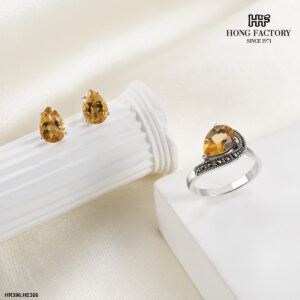
The Thai Craftsmanship Behind Peridot Jewelry
Thailand is globally recognized for its high-quality jewelry craftsmanship. Thai artisans excel at cutting and setting peridot stones with precision, creating pieces that are both elegant and durable. From minimalist silver designs to intricate handmade rings, Thailand’s jewelry industry combines traditional artistry with modern trends.
Many Thai manufacturers also provide OEM and custom-made peridot jewelry, allowing brands to design exclusive collections that appeal to international markets.
Peridot Jewelry is the perfect fusion of beauty, versatility, and meaning. Its refreshing green hue complements any outfit, while its symbolic connection to renewal and positivity makes it a joy to wear every day. Whether you prefer minimal chic or statement elegance, peridot jewelry effortlessly enhances your style — bringing light, color, and happiness into your everyday life.
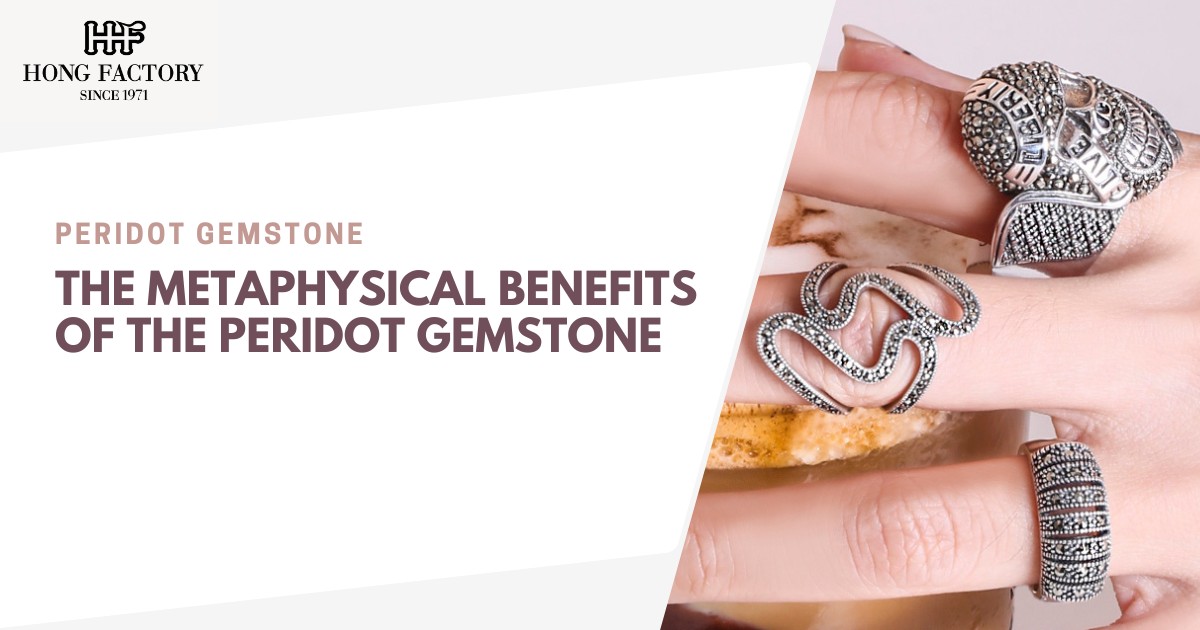
The Metaphysical Benefits of the Peridot Gemstone
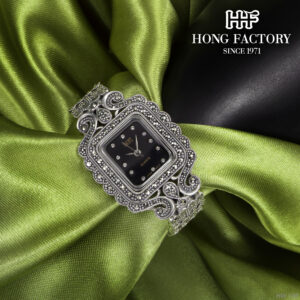
Gemstones have fascinated humanity for centuries, not only for their beauty but also for their perceived spiritual and metaphysical powers. Among these, the Peridot Gemstone holds a special place. Known as the “gem of the sun,” peridot radiates a warm, golden-green glow that symbolizes renewal, light, and positive transformation. Beyond its aesthetic charm, peridot is believed to hold powerful metaphysical properties that promote healing, abundance, and emotional balance. This article explores the deeper spiritual meaning and metaphysical benefits of peridot and why it continues to captivate hearts around the world. marcasite jewelry
The Energy and Symbolism of the Peridot Gemstone
The Peridot Gemstone is celebrated for its vibrant energy, which aligns closely with positivity and growth. Its unique green hue is said to carry the frequency of nature itself—encouraging regeneration, balance, and vitality. In many ancient cultures, peridot was believed to harness the energy of the sun, bringing warmth and joy to those who wore it.
Historically, Egyptians referred to peridot as the “gem of the sun,” using it as protection against dark energies. Hawaiian legends even suggest that peridot represents the tears of the volcano goddess Pele, connecting the gem to the Earth’s fiery creation energy.
Metaphysical Healing Properties
Peridot is known as a powerful heart and solar plexus chakra stone. Its healing vibrations work to open the heart, clear emotional blockages, and restore inner peace.
- Emotional Healing and Renewal
Peridot helps release old emotional patterns such as guilt, fear, or resentment. By cleansing the heart chakra, it allows space for forgiveness, compassion, and joy. Wearing or meditating with peridot encourages self-acceptance and emotional clarity.
- Balancing Energy and Promoting Positivity
This gemstone emits a high-frequency vibration that neutralizes negative energy and promotes a sense of optimism. It helps transform jealousy, anger, and anxiety into understanding, motivation, and confidence. People who wear peridot often report feeling lighter and more centered.
- Attracting Abundance and Prosperity
Known as a “stone of abundance,” peridot is believed to attract wealth and opportunities. It enhances manifestation by aligning one’s mindset with positivity and gratitude. By clearing blockages in the solar plexus chakra, peridot helps boost willpower and decision-making, both of which are key to achieving success.
- Enhancing Relationships and Compassion
Because peridot resonates with the heart chakra, it strengthens emotional connections and encourages empathy. It is said to bring harmony to relationships by fostering understanding and trust.

Spiritual Uses and Practices with Peridot
The Peridot Gemstone can be used in several spiritual and mindfulness practices to harness its energy more effectively:
- Meditation: Hold a peridot stone in your hand or place it over your heart during meditation to enhance emotional healing and inner peace.
- Energy Cleansing: Use peridot as part of your crystal healing layout to balance the heart and solar plexus chakras.
- Affirmations: Combine peridot with affirmations such as “I am open to love and abundance” or “I release negativity and embrace joy.”
- Dream Work: Placing peridot near your bed is believed to promote restful sleep and positive dreams.
Peridot’s Connection to Chakras and Auras
Peridot primarily influences two major energy centers in the body:
- Heart Chakra (Anahata): Encourages love, compassion, and forgiveness.
- Solar Plexus Chakra (Manipura): Strengthens confidence, willpower, and emotional resilience.
By balancing these chakras, peridot helps align your emotional and spiritual energies, creating a sense of inner harmony and empowerment.
The Role of Peridot in Astrology
In astrology, peridot is the birthstone for August and is strongly associated with the zodiac signs Leo and Virgo.
- For Leo, peridot amplifies their natural warmth and creativity while helping them maintain emotional balance.
- For Virgo, it promotes calmness and reduces overthinking, helping them embrace self-compassion and trust their intuition.
Wearing peridot as jewelry, especially rings or pendants, can enhance these positive traits and attract good fortune.
Physical Healing Associations
Though peridot’s healing powers are often associated with emotional and spiritual well-being, it is also believed to support physical health. Healers use it to aid in:
- Strengthening the immune system
- Improving digestion and metabolism
- Enhancing energy levels
- Reducing stress-related fatigue
Its revitalizing energy makes it a favorite among those seeking balance between mind and body.
Caring for Your Peridot Gemstone
To maintain its physical and energetic properties:
- Clean gently with mild soap and lukewarm water.
- Avoid exposure to harsh chemicals, heat, or ultrasonic cleaners.
- Recharge its energy by placing it under moonlight or on a bed of cleansing crystals like selenite or clear quartz.
Regular cleansing keeps the stone’s vibration pure and powerful.
Incorporating Peridot into Daily Life
Peridot can be worn in many forms—rings, necklaces, earrings, or bracelets. Its bright, rejuvenating energy complements both casual and elegant outfits, making it suitable for everyday use. Keeping peridot close to your skin helps you connect with its energy throughout the day.
If you work in creative or emotionally demanding environments, peridot can serve as a talisman for focus and calm. Its gentle yet energizing frequency reminds you to stay positive and open to new opportunities.
The Peridot Gemstone is much more than a beautiful jewel—it’s a source of healing, growth, and light. From its deep metaphysical associations with abundance and protection to its soothing influence on emotions, peridot continues to inspire spiritual seekers and jewelry lovers alike. Whether worn as a ring, pendant, or carried as a pocket stone, peridot invites positivity, renewal, and balance into your life—illuminating your path with the energy of the sun.
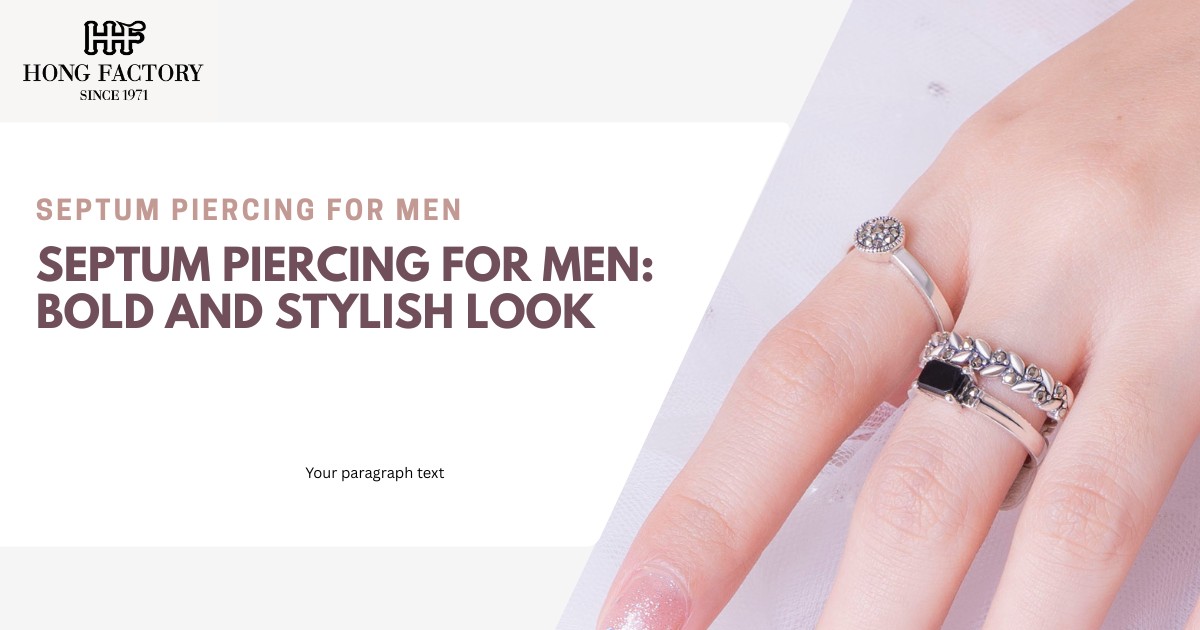
Septum Piercing for Men: Bold and Stylish Look

In the world of men’s fashion, bold accessories are taking center stage — and septum piercing is leading the charge. Once seen as a symbol of rebellion, the septum piercing has evolved into a stylish statement that reflects individuality, confidence, and sophistication. For men who want to express their personality beyond traditional grooming and fashion, this piercing adds an edge that’s both masculine and refined. marcasite jewelry
The Rise of Septum Piercing for Men
Piercings are no longer just for rockstars or rebels; they’ve become an integral part of modern men’s fashion. Among the many styles available, the septum piercing stands out for its symmetry, versatility, and ability to balance both subtlety and boldness. Whether worn with a minimalist hoop or a statement ring, it complements every aesthetic — from streetwear to high fashion.
Celebrities such as Zayn Malik, Jacob Elordi, and Lil Nas X have played a major role in popularizing septum piercings for men. Their confident looks have turned this once-niche style into a mainstream trend, proving that men can wear piercings with elegance and authority.
Septum Piercing: A Strong Symbol of Masculine Edge and Identity
The appeal of Septum Piercing for men goes beyond style — it’s a reflection of strength, freedom, and authenticity. Historically, men across different cultures wore septum rings to signify bravery, maturity, and warrior spirit. Today, that same symbolism resonates with modern masculinity — courage, confidence, and individuality.
- A Modern Take on Ancient Traditions
In ancient tribes across Africa, South America, and Asia, men wore septum rings as rites of passage or symbols of strength. The piercing represented courage, virility, and connection to cultural identity. In today’s world, it has evolved into an artistic expression — a modern way for men to showcase inner strength and independence while honoring those timeless roots.
- A Fashion Statement with Depth
Septum piercings for men combine rugged masculinity with creative flair. They can transform a look instantly — from casual streetwear to refined sophistication. The balance of metal against skin draws attention to facial features, especially the jawline and symmetry, enhancing masculine appeal.
- Breaking Gender Barriers in Style
The septum piercing is inherently gender-neutral, but its rise among men represents a broader cultural shift. Today’s fashion-forward men aren’t afraid to experiment with self-expression. Wearing a septum piercing shows confidence and a willingness to challenge outdated norms of what masculine beauty should be.

Why Men Are Embracing Septum Piercings
The increasing popularity of septum piercings among men is not just about trends — it’s about the message it conveys. Here are key reasons why men are choosing to get this bold piercing:
- Versatile Styling Options
Septum piercings allow for endless creativity. Men can switch between small, subtle rings for everyday wear and larger, bolder pieces for fashion statements. Materials like silver, titanium, or black-coated steel add masculine character and modern appeal.
- Professional and Practical Flexibility
One of the best things about a septum piercing is its adaptability. When needed, the jewelry can be flipped upward and hidden — perfect for professional environments or formal settings. This versatility allows men to enjoy bold style without compromising practicality.
- Expression of Confidence and Individuality
A septum piercing is not just an accessory — it’s a declaration of confidence. Choosing a central facial piercing requires boldness and self-assurance. For many men, it’s a reflection of their independent spirit and freedom to define their own image.
- Low Pain, High Reward
Despite its daring look, the septum piercing is relatively low on the pain scale. The needle passes through the soft tissue below the cartilage, not the hard cartilage itself. With proper care, it heals in about 6–8 weeks, making it a straightforward yet striking choice.
- Influence of Music, Fashion, and Social Media
The resurgence of alternative and streetwear fashion has fueled the popularity of men’s septum piercings. Influencers and musicians have normalized it as a key part of men’s self-expression — a way to stand out and define one’s style identity.
Choosing the Right Jewelry for Men’s Septum Piercing
Jewelry selection plays a big role in defining the tone of your look. Here are some popular choices for men:
- Circular Barbells (Horseshoe Rings): The go-to option for most men — simple, edgy, and easy to conceal.
- Captive Bead Rings: Timeless design offering balance between rugged and refined.
- Clickers: Ideal for adding unique designs or subtle detailing.
- Thick Seamless Hoops: Perfect for a bold, masculine look.
Finish options such as matte black, brushed silver, or gunmetal tones give a contemporary and masculine edge, while gold or titanium offers sophistication.
Styling Tips for Men with Septum Piercings
A septum piercing is versatile enough to match various looks and lifestyles:
- Streetwear Style: Pair with a black hoop for a tough, urban aesthetic.
- Minimalist Look: Opt for a thin silver ring to complement clean lines and simple outfits.
- Rockstar Edge: Combine with layered chains, leather jackets, or statement sunglasses.
- Professional Attire: Use a subtle, small ring or flip it up for formal occasions.
Confidence is the key — the piercing enhances your look when worn with pride and authenticity.
Caring for Your Septum Piercing
To ensure proper healing and lasting results, follow these aftercare steps:
- Clean with a saline solution twice daily.
- Avoid touching or rotating the jewelry.
- Stay away from harsh cleansers or alcohol-based products.
- Keep the area dry and free from makeup or dirt.
- Be patient — healing takes consistency and care.
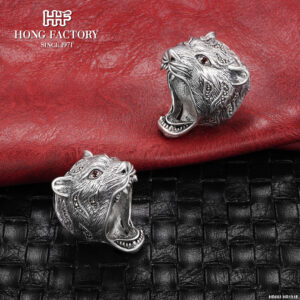
The Meaning Behind the Look
For many men, a septum piercing is more than fashion — it’s a form of self-definition. It represents strength, fearlessness, and nonconformity. Some wear it as a statement of individuality; others see it as a reminder of resilience and transformation.
Regardless of meaning, it’s a symbol of authenticity — proof that confidence is the real style statement.
The Septum Piercing for men is more than a trend — it’s a movement of self-expression and confidence. It blends history, style, and attitude into one powerful accessory that complements the modern man’s look. Whether you’re drawn to its cultural roots, bold aesthetic, or versatility, a septum piercing is a small detail that makes a big statement.
In 2025 and beyond, one thing is clear: the septum piercing isn’t just for fashion rebels — it’s for every man who wants to stand out, stay true, and wear his confidence with pride.
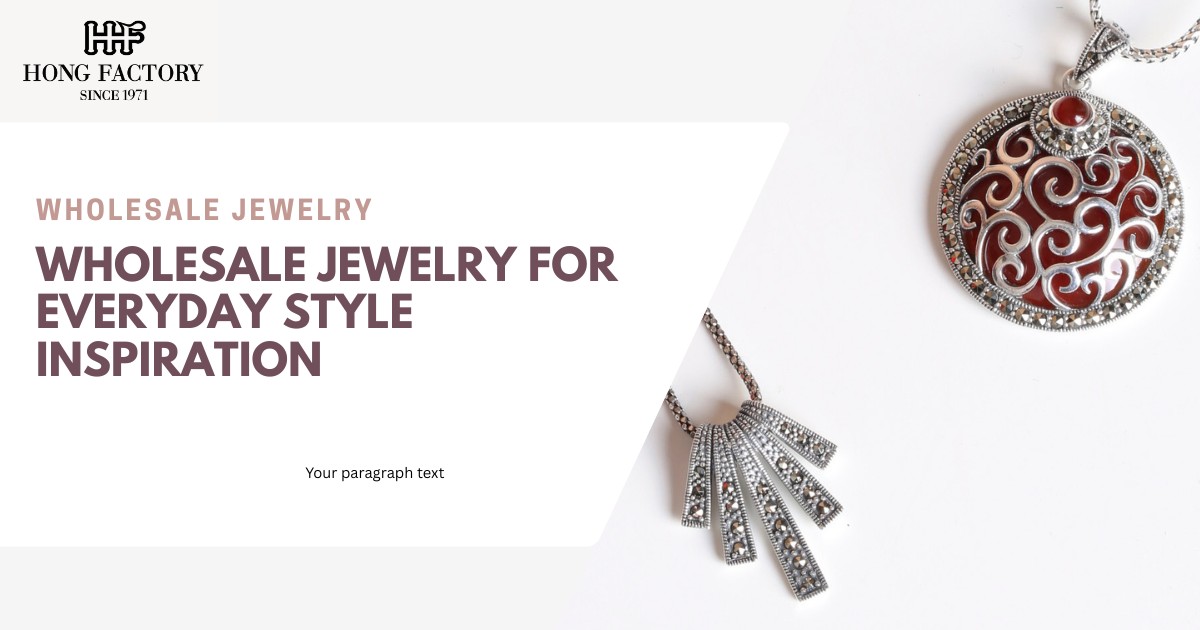
Wholesale Jewelry for Everyday Style Inspiration
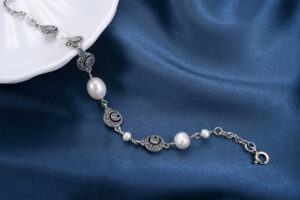
Jewelry isn’t just for special occasions — it’s an everyday expression of personality, confidence, and creativity. From subtle silver chains to statement rings, Wholesale Jewelry offers endless possibilities for creating stylish looks that fit every mood and moment. For retailers and customers alike, wholesale jewelry has become the key to staying fashionable without breaking the bank. marcasite jewelry
In this article, we’ll explore how wholesale jewelry inspires daily fashion, helps people express individuality, and supports businesses looking to provide trendy, high-quality pieces for every day of the week.
The Rise of Everyday Jewelry
Gone are the days when jewelry was reserved for weddings or luxury events. Modern fashion celebrates effortless style — accessories that enhance your outfit and tell your story. Whether you’re heading to work, meeting friends, or relaxing on the weekend, the right piece of jewelry can transform a simple look into something memorable.
Wholesale jewelry plays a crucial role in this shift. With affordable prices and diverse designs, it makes everyday accessorizing accessible for everyone. Brands can offer stylish, durable pieces that customers can mix and match daily.
Wholesale Jewelry: Making Style Accessible to Everyone
The popularity of Wholesale Jewelry stems from its ability to combine affordability, creativity, and quality. By sourcing directly from trusted manufacturers, retailers can offer customers premium designs at lower prices — making fashion-forward accessories part of everyday life.
- Variety of Styles for Every Personality
Wholesale jewelry collections include minimalist silver necklaces, gemstone bracelets, bohemian rings, and elegant stud earrings. This variety allows people to switch up their style effortlessly — from professional and polished to casual and playful.
- Affordable Luxury
The biggest advantage of wholesale jewelry is its affordability. Customers no longer have to choose between price and style. With high-quality materials like sterling silver and cubic zirconia, wholesale pieces provide a touch of luxury without the premium price tag.
- Perfect for Layering and Mixing
Everyday fashion thrives on versatility. Wholesale jewelry encourages creativity — wear a simple chain one day and layer it with pendants or charms the next. Retailers can promote this concept by offering collections designed for mixing and matching.
- Trendy Yet Timeless Designs
Manufacturers constantly update their catalogs to reflect global trends — minimalist aesthetics, vintage revivals, and gemstone color palettes. Yet, they also retain timeless designs that never go out of style, appealing to both young shoppers and mature customers.
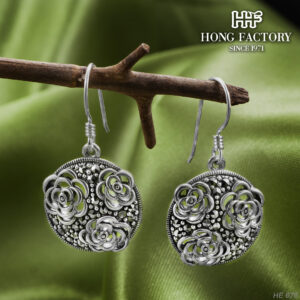
How Wholesale Jewelry Inspires Everyday Style
The influence of wholesale jewelry goes beyond affordability — it empowers self-expression. Here’s how these versatile pieces elevate daily outfits:
- Office Elegance
A polished look is incomplete without subtle accessories. A pair of marcasite earrings or a sleek silver bracelet adds a refined touch to business attire without being too flashy.
- Weekend Casual
Layered necklaces and stackable rings are perfect for laid-back weekends. They enhance basic jeans-and-tee outfits with just the right amount of personality.
- Evening Charm
Wholesale jewelry also transitions beautifully from day to night. A bold pendant or statement ring can instantly elevate an evening look, turning casual wear into something sophisticated.
- Minimalist Confidence
For those who prefer simplicity, minimalist silver or gold pieces offer elegance that feels natural and effortless. Clean lines and subtle textures reflect quiet confidence.
Why Retailers Love Wholesale Jewelry for Everyday Collections
For jewelry retailers and online stores, offering everyday-style jewelry through wholesale suppliers brings numerous benefits:
- High Profit Margins: Low sourcing costs allow competitive retail pricing.
- Fast Trend Response: Wholesale manufacturers quickly adapt to global fashion movements.
- Bulk Availability: Easy to restock popular designs and keep collections fresh.
- Custom Options: Many suppliers offer OEM/ODM customization for branding opportunities.
This model ensures consistent product flow and customer satisfaction — key elements of long-term retail success.
Materials That Define Everyday Wholesale Jewelry
Everyday jewelry should be durable, stylish, and comfortable. Popular materials include:
- Sterling Silver (925): A timeless choice that combines beauty and strength.
- Cubic Zirconia: Affordable sparkle that mimics real gemstones.
- Stainless Steel: Hypoallergenic and resistant to tarnishing.
- Gold Plating: Adds luxury and warmth without the high cost.
- Natural Gemstones: Unique textures and colors for artistic expression.
These materials ensure that wholesale jewelry pieces remain fashionable and long-lasting, perfect for daily wear.
How to Style Everyday Jewelry Like a Pro
- Layer Necklaces: Combine multiple chain lengths for visual depth.
- Stack Rings: Mix metals or designs for a trendy, personalized look.
- Balance Proportions: Pair statement earrings with simple bracelets.
- Mix Textures: Combine matte finishes with polished or hammered metals.
- Stay True to Your Style: Let jewelry enhance, not overpower, your personality.
With these styling ideas, anyone can turn basic outfits into stylish ensembles effortlessly.
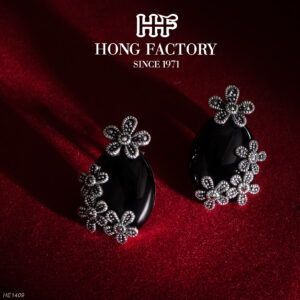
The Role of Thailand in the Everyday Jewelry Market
Thailand remains one of the leading exporters of wholesale jewelry globally. Known for its master silversmiths and ethical craftsmanship, Thailand offers a wide selection of jewelry ideal for everyday wear. Thai suppliers balance artistry and innovation, creating designs that are both trendy and timeless.
From marcasite jewelry to handmade silver collections, Thai manufacturers provide international buyers with high-quality products that suit every lifestyle.
Everyday fashion is all about expression — and Wholesale Jewelry makes that possible for everyone. With diverse styles, affordable pricing, and superior craftsmanship, wholesale jewelry empowers individuals to showcase their personality daily. For retailers, it offers a profitable way to inspire customers and meet the growing demand for accessible, high-quality accessories.
From minimalist silver chains to gemstone earrings, wholesale jewelry transforms ordinary days into extraordinary moments — one beautiful piece at a time.




